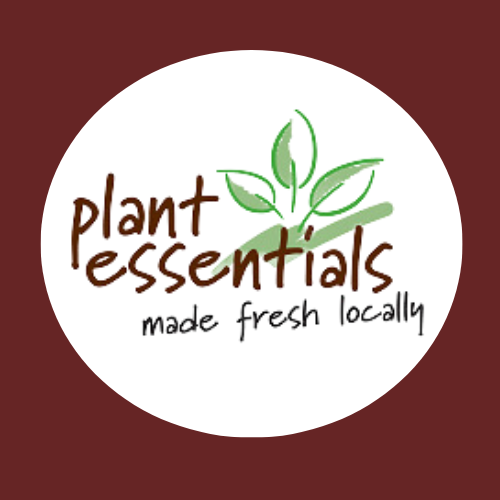
Essential Information Bites - some info on some delicious natural foods
Coeliac Disease – is caused by an allergy to gluten. Wheat, barley, rye and oats should be avoided.Gluten-free substitutes include quinoa, millet, corn, buckwheat, rice & soy.
Semolina - made from the endosperm of durum wheat. Is used to make puddings, cakes, biscuits and breads (gives them a nice grainy texture).
Couscous - is not a grain but actually a form of pasta made by steaming and drying cracked durum wheat. Cooking Couscous – place in a large bowl and cover with boiling water, leave to stand for 10 minutes or until all the water has been absorbed.
Oats – available rolled, flaked, as oatmeal or oat bran. Commonly used in porridge, oatcakes and pancakes. Oat groats are the hulled, whole kernels. Rolled oats are made from groats that have been heated and pressed flat. Oats are one of the most nutritious grains and research has shown that the oatbran has the ability to reduce blood cholesterol and beneficial in increasing HDL cholesterol levels. High in fibre and contains vitmin E, calcium, magnesium, phosphorus, potassium and some B vitamins.
Rye – commonly used for bread making, produces a dark, dense and dry loaf. Is low in gluten and is often mixed with wheat flour for cooking. Is a good source of Vitamin E, some B vitamins, protein, calcium, iron, phosphorus and potassium. High in fibre and is used in natural medicine to help strengthen the digestive system.
Polenta – made from cornmeal. Is an good alternative to mashed potato. Gluten Free.
Cooking – bring 4 cups of water to the boil in a saucepan. Remove from the heat and gradually add 1 ½ cups of polenta, use a whisk to prevent lumps. Return pan to the heat and stir continuously with a wooden spoon, until it is thick and creamy, should take a few minutes. Season to taste with salt and pepper. For flavour you can add herbs, butter, olive oil or cheese.
Barley – is believed to be the oldest cultivated grain. Pearl barley is the most commonly used form and is made from the husked, steamed then polished grain. It is used in soups, stews and bakes. Is rich in fibre, calcium, phosphorus, iron, magnesium and B vitamins.
Making Lemon Barley Water – rinse 1 cup of pearl barley, place in a saucepan and cover with water. Bring to the boil then reduce heat and simmer for 20 minutes. Skim off any scum that forms on top. Add the grated rind of one lemon and 50g of organic sugar to the pan. Stir and leave to cool. Add the juice of 2 lemons. Add more sugar if required. Serve chilled.
Wheat
Wheat Grain - is the most commonly grown grain crop in the world and has been cultivated since 7000BC.
Wheat Bran - the outer husk of the wheat kernel. Is very high in soluble dietary fibre, and is known as nature's most effective laxative. Can be used in cakes, muffins, breakfast cereals, bread and biscuits.
Wheat Flakes – is made from steamed and softened wheat berries that have been rolled and pressed. They are used as a base for muesli or porridge or can be added to breads or cakes.
Wheat Germ – is the heart of the whole wheat berry. A rich source of protein, vitamin B & E and iron. Can be used in cakes, muffins, breakfast cereals, bread and biscuits. Once opened will keep best refrigerated.
Bulgur Wheat – is made from cooked wheat berries which have had the bran removed then dried and crushed. Its main use is in Tabbouli.
Sea Vegetables
Nori – Sold as thin purple/black sheets. Has a delicate texture and light flavour. It does not require soaking. Used to wrap sushi. Can also be toasted and crumbled as a garnish.
Arame – Sold as delicate black strips. Has a mild, slightly sweet flavour. This is the best sea vegetable to try if you have never tried any before. Must be soaked before use in salads or stir-fries or can add dry to noodles or soup dishes.
Wakame – Similar to Kombu. Brown/green colour. Has a mild flavour and is the most versatile sea vegetable. Soak before using in salads or soups, or toast and crumble to use as a condiment or garnish. Is rich in calcium, vitamin B and vitamin C.
Kombu – Also known as Kelp. Is brownish in colour. It has a very strong flavour and is best when used in dishes that are cooked slowly such as soups or stocks. Add a small strip to bean while they are cooking to make them softer and more digestible. Is rich in iodine and contains calcium, potassium and iron.
Agar Agar – The vegetarian equivalent to gelatine. Used as a setting agent in both sweet and savory dishes. It has a neutral taste so does not effect the taste of other ingredients. It is more effective than gelatine so only a small amount is needed.
- Choosing a selection results in a full page refresh.
